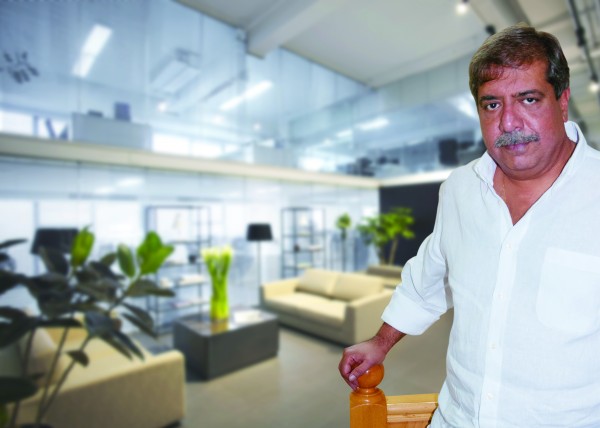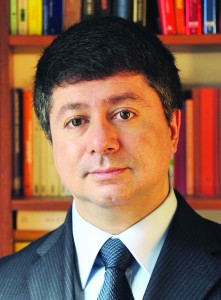Buffeted by the economic downturn, the southern European nation staggered but managed to stay on its feet. Today, it is banking on technological innovation…
Buffeted by the economic downturn, the southern European nation staggered but managed to stay on its feet. Today, it is banking on technological innovation to regain its robustness.
Italy is one of the largest AC markets in Europe and it is estimated that it alone accounts for 25% of the total cooled floor area in the EU. The market of room air conditioners (RACs) has boomed after 2000, with average sales of more than one million units per year. Antonio Cianci, CEO of Advanced Materials GmbH/SRL, says: “A total of 42 Italian companies are involved in the HVAC market – a number that puts Italy as the fourth in Europe after only Britain, Germany and Denmark.

Commercial establishments in Italy are the highest growing sector for air conditioners, with about 50% of the cooling demand taken over by chillers. Italy can be considered as the European leader for the air conditioning market when it comes to turnover and sales of equipment, especially in the non-residential sector; this positions it way ahead of Spain, France, UK, Germany and Poland. Says Cianci: “Despite a reduction of about two per cent in 2013, the volume of sales and revenues for the national systems for air conditioning in the non-residential sector corresponds to approximately 28.2% of the total, compared with 23% in Spain, 18% in France, 13.8% in the UK and 10.3% in Germany.”
The majority of heating and cooling requirements are in the urban areas, where three quarters of European citizens live. In recent years, the number of hot summer days, especially in those regions with a usually moderate climate (Austria, Germany, Belgium, Ireland, France, UK, etc.), has been increasing; consequently, this has led to a growing demand for systems with cooling load features. In the Italian residential sector, the most commonly adopted air conditioning systems are room air conditioners and split units. Even though a clear segmentation of the sector is not available, the Italian Association of Manufacturers of Air Conditioning and Ventilation Equipment Co.Aer (2006) (now renamed to ASSOCLIMA) reported that the market is dominated by mono-split conditioners in the range below 7 kW cooling power. This type of system alone covers nearly 75% of the stock. Large split and multi-split systems account for nearly 15%, the remaining 10% being covered by small capacity room air conditioners. However, in 2012, Co.Aer revealed that the HVACR industry had a negative turnover. It reported declines across various sectors of the industry, including multi-split, VRF, mini VRF, centralised units, fan coils and refrigerants.
Market penetration
 Despite declines, there are huge changes in the HVAC industries. Several HVAC manufacturers are adopting different strategies and innovative methods in order to improve their market penetration. Says Cianci: “In the light of economic, technological and cultural changes of recent years, the increase in the HVAC sector seems to be supported by the decrease in prices of such equipment (due to increased global competition), by technical innovations in the field and by greater sensitivity to issues such as energy-saving and environmental impact of global population. Companies should also be able to offer complete technology solutions to support their introduction in the market, as more and more HVAC systems are offered and sold as integrated systems that include alarm systems, lighting, extraction, humidification and a general air quality control. It appears that some manufacturers are offering solar-powered air conditioning systems, even if the costs of such systems cannot be recovered in the short term.” Further adding to the culture of R&D and innovation in the HVAC sector, Cianci says, “The HVAC industry is under pressure to design more effective equipment at a faster rate. Improvements that address noise reduction, energy efficiency, eco-friendly design and reliability are essential for HVAC manufacturers trying to get ahead of the competition. The HVAC industry is seeing innovation in fields such as air conditioner equipment, building systems integration and building automation and energy management. Other changes include integration of the various systems present in a building (HVAC, security, fire alarms, communications, internet, etc.), which helps save construction costs and allows efficient facilities management. Also, control systems are adopting cloud-computing strategies to offer flexible and accessible monitoring and operations of buildings.” PrakashChablani, the Managing Director of Unigulf, adds, “The culture of innovation goes towards more compact units, and quieter and energy-efficient machines.”
Despite declines, there are huge changes in the HVAC industries. Several HVAC manufacturers are adopting different strategies and innovative methods in order to improve their market penetration. Says Cianci: “In the light of economic, technological and cultural changes of recent years, the increase in the HVAC sector seems to be supported by the decrease in prices of such equipment (due to increased global competition), by technical innovations in the field and by greater sensitivity to issues such as energy-saving and environmental impact of global population. Companies should also be able to offer complete technology solutions to support their introduction in the market, as more and more HVAC systems are offered and sold as integrated systems that include alarm systems, lighting, extraction, humidification and a general air quality control. It appears that some manufacturers are offering solar-powered air conditioning systems, even if the costs of such systems cannot be recovered in the short term.” Further adding to the culture of R&D and innovation in the HVAC sector, Cianci says, “The HVAC industry is under pressure to design more effective equipment at a faster rate. Improvements that address noise reduction, energy efficiency, eco-friendly design and reliability are essential for HVAC manufacturers trying to get ahead of the competition. The HVAC industry is seeing innovation in fields such as air conditioner equipment, building systems integration and building automation and energy management. Other changes include integration of the various systems present in a building (HVAC, security, fire alarms, communications, internet, etc.), which helps save construction costs and allows efficient facilities management. Also, control systems are adopting cloud-computing strategies to offer flexible and accessible monitoring and operations of buildings.” PrakashChablani, the Managing Director of Unigulf, adds, “The culture of innovation goes towards more compact units, and quieter and energy-efficient machines.”
Drivers of growth
The growth of the HVAC industry is directly tied in with the construction market. Cianci implies: “Positive signs in the construction market indicate the HVAC sector’s burgeoning return to strength. As more residential and commercial buildings are built, demand for HVAC systems will increase. In addition, national standards for energy efficiency and a growing trend toward lowering household and business energy use are projected to encourage home and building owners to upgrade to more efficient systems.”
Dodging dogmas
The global market for HVAC systems has been down due to the economic crisis, and the market has shifted paradigms in recent years. The old systems were basic analogue-based electrical systems, and they still make up the majority of the installed systems. The newer systems are more energy efficient and environmentally friendly. That is the reason the shift to newer systems is making the market rise.
However, there is an ongoing debate raging in the European HVAC community about the burden regulations have placed on the manufacturers of cooling and heating equipment. They have to deal with the various demands of building regulations, emissions controls and energy-efficiency goals, which all require various degrees of compliance. The HVAC industry has been bombarded with legislation, from safety standards to performance criteria, to rules on equipment disposal. Says Cianci: “HVAC equipment is switched out for new high-efficiency models. The European Union strongly supports energy efficiency. The Directive 2012/31 on the energy performance of buildings is to promote innovation and energy efficiency through incentives. Changing regulations regarding refrigerants are also affecting HVAC equipment sales and the cooling equipment product mix.”
Compliance comes at a cost, an investment both in money and time. If compliance with the regulations is not enforced, then there exists a problem that those who cut corners are actually able to gain an advantage. They would look elsewhere, with the GCC state collectively posing as a lucrative market. This leads to the necessity for vigilance on the Gulf shores – the UAE and the other Gulf states need to be wary of allowing themselves to be turned into a dumping ground for unregulated or even defective goods.
The Italian Connection
 In addition to an ethical approach, Italian manufacturers, broadly speaking, are riding on a core ethos of excellence in their bid to strengthen their business relations in the GCC region. Says Cianci: “Their (the manufacturers’) expectations are very high, because the UAE market is always changing and the construction sector, linked to HVAC market, is dynamic, and it pays attention to environment issues. Their experiences, technology and innovation can be decisive factors to let them to enter in this market or to develop new opportunities.” Also, in order to stay ahead of the game, the manufacturers are offering on-going support to address the needs of the people in the Middle East. Says Chablani: “Operations, maintenance, back up and support are obvious services given by local representatives or sales organisations. This requires an effort that is well known to global exporters, like most of the Italian companies, so it is not an issue. The biggest effort is to change the mentality towards high-end products that is now beginning to be understood in the Middle East, but it will take time and hopefully will happen gradually.” Joe Cherian, Managing Director of RACI India, a subsidiary of RACI srl, Italy, says, “Over the years, everyone has understood the benefits and significant savings in operating a central chilled water system. During the last decade, we have seen new companies evolve and expand to other GCC countries”. RACI is currently focusing on the GCC market and sees potential growth for their District Cooling valves, accessories and pipeline product business in the UAE.
In addition to an ethical approach, Italian manufacturers, broadly speaking, are riding on a core ethos of excellence in their bid to strengthen their business relations in the GCC region. Says Cianci: “Their (the manufacturers’) expectations are very high, because the UAE market is always changing and the construction sector, linked to HVAC market, is dynamic, and it pays attention to environment issues. Their experiences, technology and innovation can be decisive factors to let them to enter in this market or to develop new opportunities.” Also, in order to stay ahead of the game, the manufacturers are offering on-going support to address the needs of the people in the Middle East. Says Chablani: “Operations, maintenance, back up and support are obvious services given by local representatives or sales organisations. This requires an effort that is well known to global exporters, like most of the Italian companies, so it is not an issue. The biggest effort is to change the mentality towards high-end products that is now beginning to be understood in the Middle East, but it will take time and hopefully will happen gradually.” Joe Cherian, Managing Director of RACI India, a subsidiary of RACI srl, Italy, says, “Over the years, everyone has understood the benefits and significant savings in operating a central chilled water system. During the last decade, we have seen new companies evolve and expand to other GCC countries”. RACI is currently focusing on the GCC market and sees potential growth for their District Cooling valves, accessories and pipeline product business in the UAE.
Copyright © 2006-2025 - CPI Industry. All rights reserved.